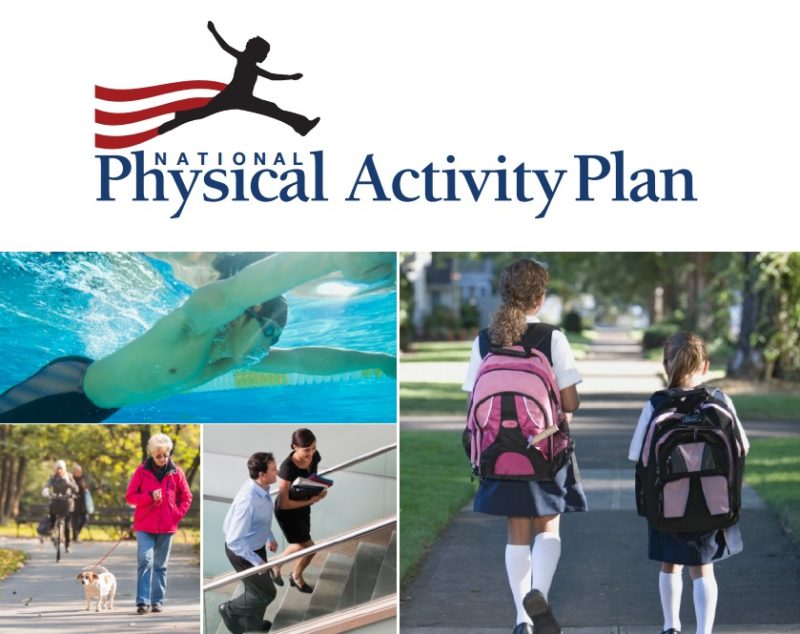
Share On Social!
In 2010, through a process that engaged hundreds of professionals, researchers, and public and private organizations, the first U.S. National Physical Activity Plan (the Plan) was released. The Plan was a “living document” of a comprehensive set of policies, programs, and initiatives designed to increase physical activity in seven societal sectors: business and industry; community recreation, fitness and parks; education; health care; mass media; public health; and transportation, land use and community design.
The overarching goal of the Plan is to create environments that support physical activity where people live, work, and play in order to improve health, prevent disease and disability, and enhance quality of life, and to be updated on a regular basis.
In April 2016, the Plan was updated and released, to include two additional sectors: faith-based settings and sports.
A Diversity Committee was formed in the revision of the plan to address substantial disparities in physical activity that exist across groups based on gender, age, race, ethnicity, socioeconomic status, physical, cognitive or sensory ability, and geography, to ensure that the needs of diverse groups were included.
Due to disparities in safe, quality places to be physically active, Latino’s face disparities in physical activity, obesity, and chronic disease. In order to reduce these disparities, it is important to foster a national culture that supports physically active lifestyles across divers populations.
NO single, central organization is responsible for carrying out the Plan’s strategies and tactics; thus, for the Plan to succeed, the American people, working as individuals or through their organizations or government entities, will need to play a role in putting the Plan to work:
- Individuals can educate leaders in all sectors and encourage them to adopt elements of the Plan.
- Organizations can take leadership roles in implementing the Plan’s strategies and tactics at the community, state or national level.
- Government agencies at all levels can take actions that promote physical activity and create environments that support it.
The Active Living Council for San Antonio, TX, for example, adopted the 2010 National Physical Activity Plan and formed the Active Living Plan for a Healthier San Antonio, with strategies and tactics relevant to the city and the residents. Because it is a living document, the Active Living Council is beginning the process of updating their plan based on the newly released Plan.
Learn more about the National Physical Activity Plan here.
Copy and Share: Individuals/organizations/govt entities are the drivers behind the National Physical Activity Plan. http://salud.to/1SUzPmr @SaludToday
Explore More:
Healthy Families & SchoolsBy The Numbers
142
Percent
Expected rise in Latino cancer cases in coming years



